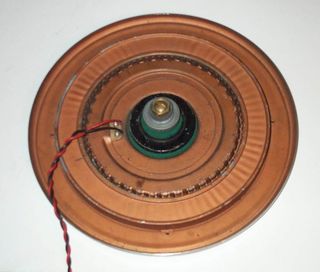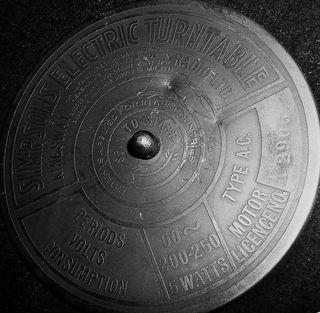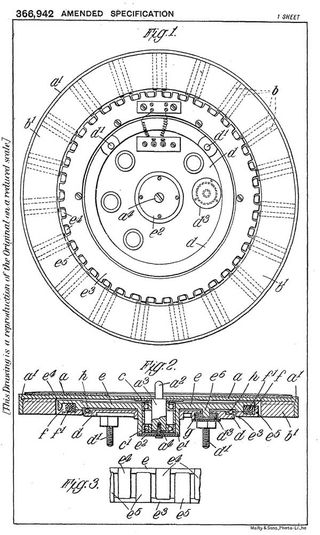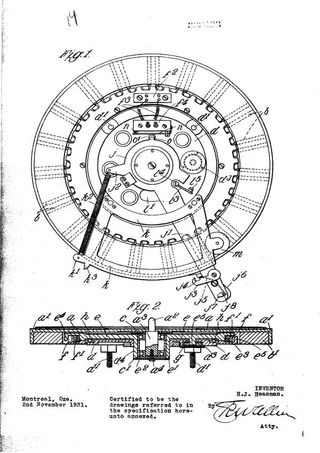Simpsons Electric Turntable
The manufacturing rights for the Simpsons Electric Turntable were held by Messrs. Simpsons Electricals Ltd but it was made by Kingsway Radio, Ltd., 3, Dane Street, High Holborn. Available in 10” and 12” turntables.
This synchronous motor was first patented in 1931 by, HENRY JAMES HEASMAN of 5A, Ferndale Road, Leytonstone, E.11, London
Heasman had several patents for this synchronous motor. The earlier models had to be, “Spin by Hand” to get them started. This was a handy feature as it also allowed the turntable to be spun in reverse. The later ones having a kick start mechanism. He held separate patents for it in Canada and in Europe.
A synchronous electric motor is an AC motor which has a speed exactly proportional to the current frequency. The UK standard of 50Hertz in this case. The motor consists of an alternating electromagnet stator, the stationary part of the rotary system, and a rotor with permanent magnets. Both the stator and rotor have 76 alternating poles. When put together and a current supplied to the stator, the motor vibrates as it is stuck in flux. Unlike an induction motor which starts itself, the synchronous motor needs to be spun to get it going. Once going it will be steady at 79rpm and only at 79rpm. Any slower and it will stop and return to a state of flux.
Basically it's the early form of a Direct Drive turntable where the use of a gear system is eliminated and the amount of moving parts in the system are minimised. The result is increased efficiency and a much quieter and highly dynamic operation.
The formula is:

The advantages of this motor in gramophones:
The disadvantages were:
Here is a website link to more information on the Simpsons Synchronous Turntable.





